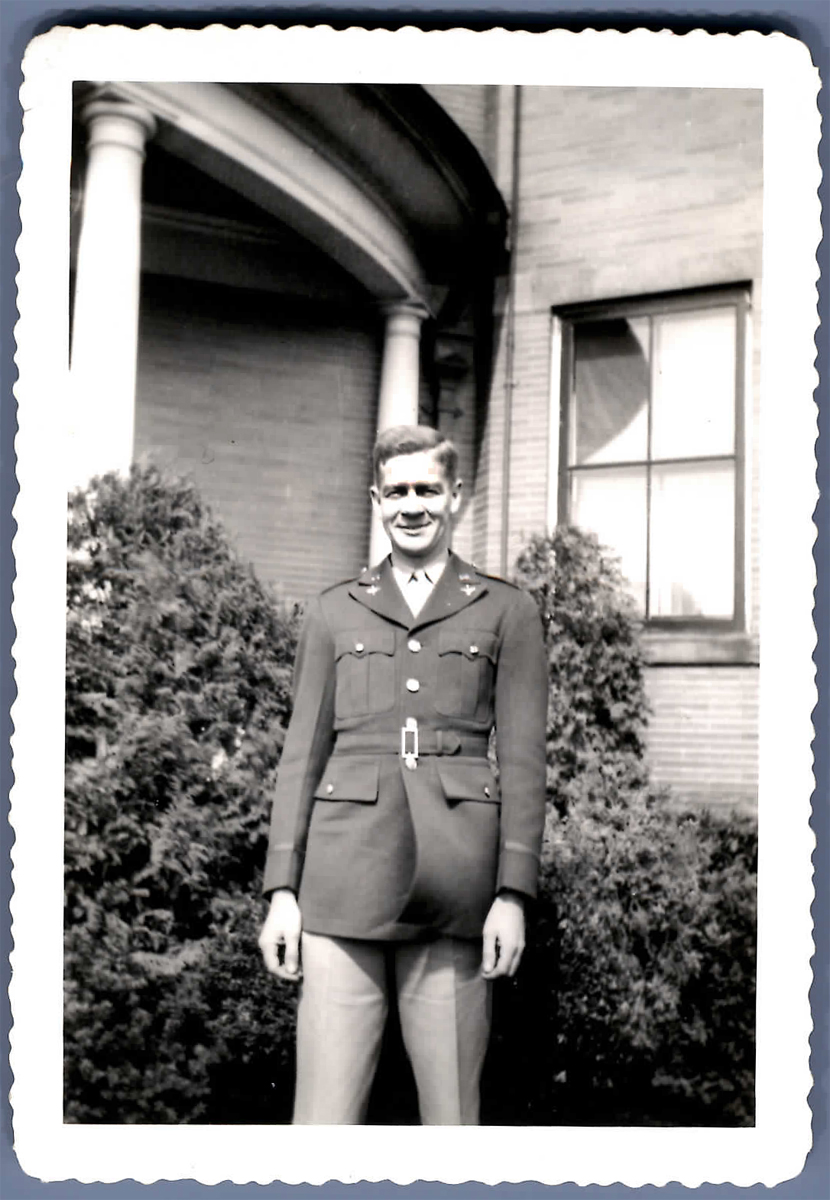Major Neil Fitzgerald
Major Neil Fitzgerald wrote this sketch of his military service for his son, David, in September, 1984
I will give you a brief history of the 344th Bomb Group in which I served during the war.
On July 24, 1942, I graduated from Cadet School at Chanute Field, Illinois, as a 2nd Lieutenant, classification: Engineering Officer. I was assigned to the 497th Bomb Sq, 344th Bomb Group, newly formed and in training at McDill Field, Florida. The Commanding officer of the 495th Sq, same group, was 1st Lt Lucius Clay, a West Point grad, who’s father was a general in the Army. Lt Clay was your commanding general in the Asian Theater. Clay was a nice guy and a disciplined leader. Our planes were the Martin B-26, twin engine bomber. A lot of controversy surrounded the plane because it was highly wing loaded and really flew by its two 2000hp Pratt and Whitney Radials. Fully loaded, it was critical at take-off, particularly if the electric prop malfunctioned, and it took a good pilot to fly it. Most of our pilots were very young and afraid of the plane, so our crash rate in training was very high. However, once in combat, it proved to be one of the most durable bombers and with a very small loss ratio.
After six months at McDill, we moved close by to Lackland AFB, Florida, for six months and then to Lake Charles, Louisiana, until we left for England in Jan 1944.
The planes were flown to England and the ground troops left by train to New Jersey and then on the Queen Elizabeth for Scotland. 18,000 troops crammed on board with a 24 hour chow line. The ship’s stabilizers were disconnected so that we could rapidly change course to elude submarines. The Queen was so fast at 35 knots, we did not need an escort. We arrived some place in Scotland on Feb 11, 1944, and went by train to Stanton Air Field in England. We flew bombing missions over Germany from there until the Fall of 1944, when we moved to an airfield about 40 miles north of Paris, from which we operated until the end of our combat missions on the 16th of April 1945.
Before we left England, I remember one morning all hands were routed out of bed at 3am to unload all bombs and install our bomb-bay fuel tanks, two 600 gallon tanks to a bomb bay. Then our planes flew gasoline to Gen Patton who in his great zeal had outrun his fuel supply and was stranded in enemy territory, some place between France and Germany.
In November of 1944, I was promoted to Group Engineering Officer and, although the position called for a Major, I did not become a Major until August 1945. With the cessation of operations in Europe my commanding officer, Col Vance, was organizing a Wing to go to the Asian theater and I was to be his A4 officer. However, the atomic bomb over Japan stopped all these plans and the 344th became an occupational group, moving to Munich, Germany. Here we got to inspect the German jet engine long before we had one. The German fighter plane equipped with this engine was raising havoc with our planes because of superior speed. However, this plane could only stay in the air about 20 minutes, so its range was very limited. Had Hitler listened to his generals and concentrated on this plane, rather than his slow bombers, the results of the war might have been different. At least it would have been prolonged.
Our stay in Germany was a very pleasant experience, because we got to tour the Alps and other parts of Europe free. Two colonels and myself took off in a huge, front wheel drive Audi and toured Southern Europe for two months. In February 1946 I returned home.
I hope you enjoyed this account of one of the groups in the old ‘Army Air Corps, the forerunner of your present Air Force,



